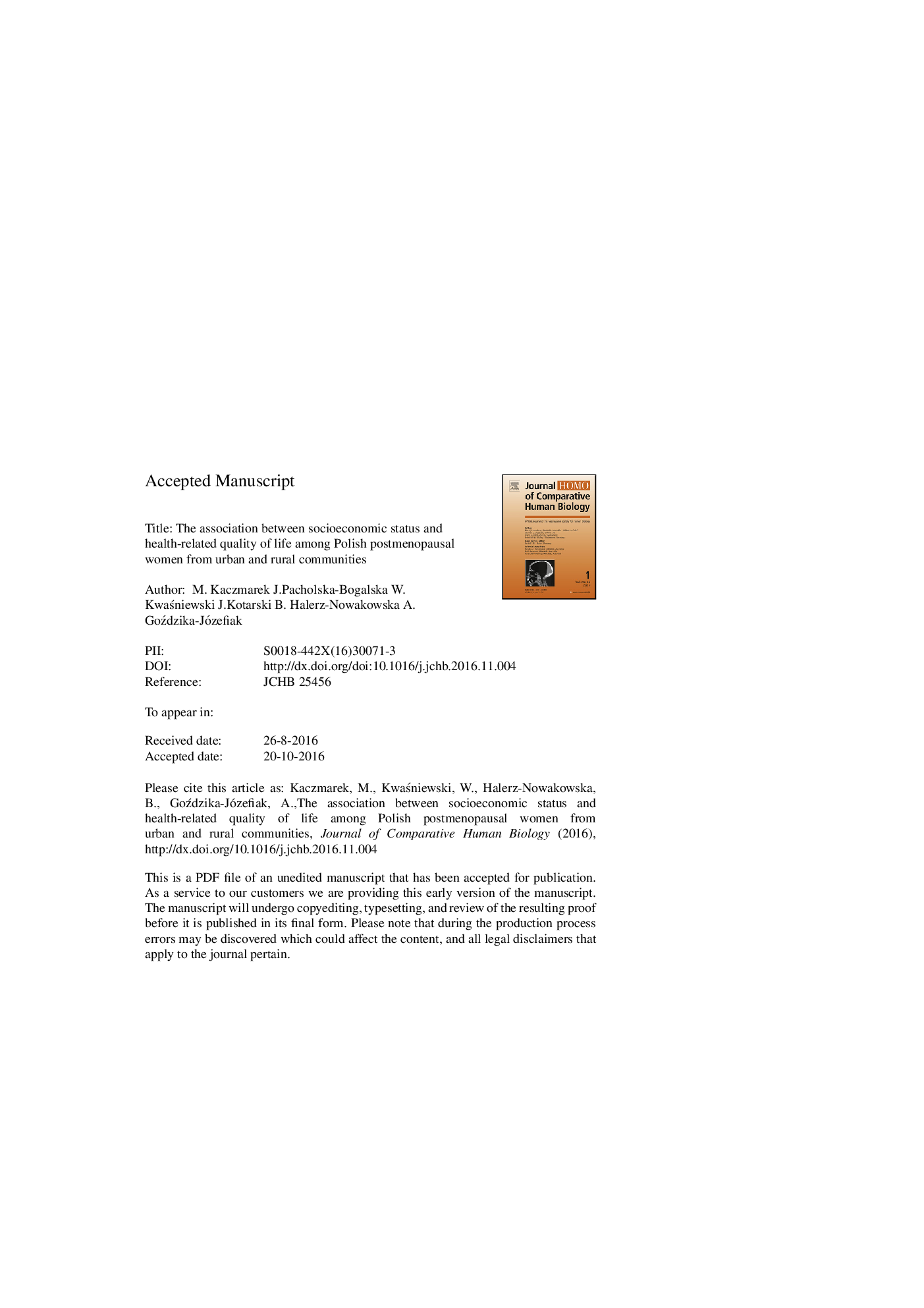| Article ID | Journal | Published Year | Pages | File Type |
|---|---|---|---|---|
| 4760445 | HOMO - Journal of Comparative Human Biology | 2017 | 21 Pages |
Abstract
A consistent rural-to-urban gradient was found in all indices of physical health functioning and well-being but not in vitality, social functioning, emotional role and mental health scales with women in large cities being likely to enjoy the highest and those in villages the lowest quality of life. The rural-urban disparities in health-related quality of life were mediated by women's socioeconomic status. The likelihood of worse physical and mental functioning and well-being was 2-3 times greater for the low socioeconomic status rural women than their counterparts from more affluent urban areas. The educational attainment and employment status were the most powerful independent risk factors for health-related quality of life in both rural and urban women. Better understanding of the role of socioeconomic status that acts as a mediator in the association between area of residence and health-related quality of life may be useful in developing public health policies on health inequalities among women at midlife.
Keywords
Related Topics
Life Sciences
Agricultural and Biological Sciences
Ecology, Evolution, Behavior and Systematics
Authors
M. Kaczmarek, J. Pacholska-Bogalska, W. KwaÅniewski, J. Kotarski, B. Halerz-Nowakowska, A. Goździcka-Józefiak,
